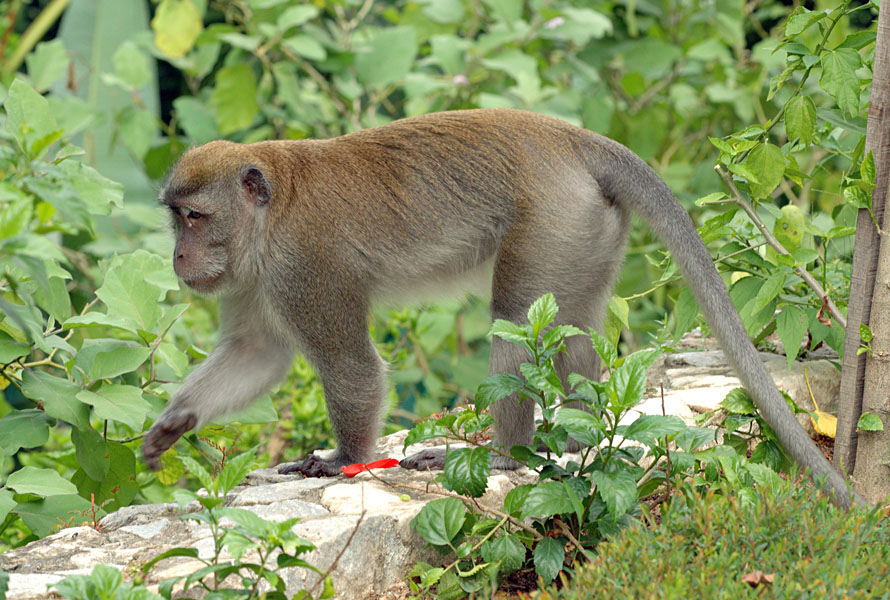
Background & Objectives
Foraging enrichment devices promote species-typical behaviors and reduce stress in captive non-human primates. This study evaluated the behavioral impact of the Fire Hose Square Knot Browser, a novel enrichment device, on 32 captive long-tailed macaques (Macaca fascicularis) at the Primate Research Center, IPB University, Indonesia. The study focused on how the device influenced daily behavior and welfare, emphasizing interdisciplinary collaboration between behaviorists and veterinarians to improve animal care.
Methodology
• Subjects: 32 macaques housed in two enclosures (K1, K2) under controlled conditions.
• Device: A pocket-like knot browser made from fire hose with 72–88 feed-dispensing holes.
• Design:
• Control periods (C1, C2): No enrichment device.
• Treatment (E): Fire hose browser introduced in K1.
• Without-Enrichment (WE): K2 macaques could observe the device in K1 but didn’t have access to it.
• Duration: 24 days (14 days habituation, 10 days observation).
• Behavioral Observations: Conducted twice daily using scan and instantaneous sampling over 288 hours.
• Behaviors Monitored: Eating, resting, mobility, affiliative, sexual, agonistic, stereotypic, auto-grooming.
Key Findings
• Positive Behavioral Changes with Enrichment (E):
• Eating, affiliative, and auto-grooming behaviors increased.
• Resting, agonistic, and stereotypic behaviors significantly decreased (p < 0.05).
• Mobility was highest in the group observing but not receiving the device (WE).
• Influence of Food Type:
• Mixed diets (Bangkok chow + yam) produced the highest eating levels.
• Fruits were preferred over chow alone, increasing feeding behavior.
• Time-of-Day Effects:
• Affiliative behavior was significantly higher in the afternoon (p = 0.001).
• Other behaviors showed no time-dependent differences.
• Health Outcomes:
• Body weight increased in the enrichment group (K1) with no injuries or negative health effects.
• Statistical Methods:
• ANOVA, Kruskal–Wallis, and Mann–Whitney tests supported significance in behavioral differences across treatment and control conditions.
Conclusions & Implications
• The fire hose square knot browser significantly enhanced animal welfare by promoting active, social, and naturalistic behaviors.
• It reduced stress indicators such as stereotypy and aggression and supported positive health outcomes (e.g., weight gain, no injuries).
• Interdisciplinary collaboration was key to ensuring both behavioral efficacy and veterinary safety.
• Findings highlight the importance of combining behavioral enrichment with nutritional diversity to optimize welfare in captive primates. • The results can inform best practices for breeding and research facilities, particularly in emerging regions like Indonesia.